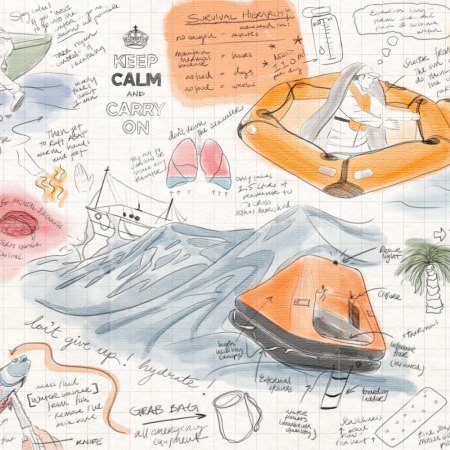Happy NaNoWriMo!
Neither an Orcan greeting nor a mutant rhino species, NaNoWriMo is short for “National Novel Writing Month,” an organization/ongoing movement to encourage everyday people to do the unthinkable: write a book in a month.
It’s possible. Yours truly has done it.
Really, anything is possible with the right mindset and 30 days. Rather than being a hindrance, the compressed time frame pretty much prohibits slacking. Miss a day of practice and your goal could be in serious jeopardy. “Intention is everything,” notes NaNoWriMo’s website. “Decide right now that you’re going to write a novel in November.”
Below, how to write a novel in a month — and four other amazing skills you can learn before November ends.
1) Write a Novel
The key to writing a novel in a month is dividing your 50,000-word goal into manageable segments over 30 days, or about 1,667 words per day. NaNo’s website acts as a peppy coach, giving you badges for hitting certain milestones and arranging meet-ups with other nascent writers during the month.
Admittedly, few people are going write a great, thoughtful, well-edited book in a month. But 325,000+ tried it last year, nearly 59,000 people hit their goals, 250 actually had their works published and participant Hugh Howey produced Wool, one of the better postapocalyptic novels written in the last few years.
As a past participant, there’s a lot to recommend about NaNoWriMo. Sure, my book — a bizarre, alternate-reality screed that served as a thinly veiled attack on an ex-paramour (who had, ironically, actually published a real book about me years before) — wasn’t suitable for print. But it certainly provided me with catharsis.
2) Play the Guitar
Guitar teacher Tom Fontana estimates that within a month of starting and through intense practice, a new guitarist could learn to play “easy guitar songs and strum a couple of chords” in a month. If that sounds discouraging, take note: Fontana’s “The Guitar Lesson” is a perfect online resource for people who need to pick up a few songs quickly. His videos are simple to follow, with on-screen animated tabs and chord charts readily available. Plus, you’ll have a song ready to go after each lesson; within 30 days, you should be able to play “Wipe Out” and Johnny Cash’s “Hurt.”
3) Learn a Foreign Language
Any teacher will tell you the same thing about learning another language quickly: immerse yourself in the language (preferably by traveling or hiring a native speaker as a language coach), read/listen/watch media in the local tongue, and speak and imitate the sounds as much as possible.
Gruff Davies, the founder of an AI language coach called Kwiziq, suggests finding a text (with audio) on a subject you enjoy and listening to the piece 10 times over a week. But that’s just for starters. Ideally, you’ll do all that and add some apps: we suggest Duolingo (which gamifies language learning), Bliu Bliu (which finds texts and videos on the net that correspond to your proficiency level) and Anki (an intelligent flash-card system).
For quicker solutions: Hollywood types (Emma Thompson, Stephen Fry) and politicians swear by Michel Thomas’s downloadable audio courses, which break down language into component parts, using small steps to build a speaker up to bigger sentences — no writing or coursework required.
4) Coding
The aptly named One Month offers 30-day courses for online entrepreneurs, including building simple apps or interactive websites. Need something specific? OM features classes on payment processing, web security and JavaScript.
5) Cooking . . . and Pretty Much Anything Else
After conquering the workweek and his own health, master-of-all-trades Tim Ferriss turned his attention to cooking. A self-described “idiot” in the kitchen, Ferriss’s The 4-Hour Chef teaches cooking newbies the basics to getting by. Ideally, you’d need about six months, but there’s a lot you can whip up here in just a few weeks. Ferriss purposely chose recipes, he tells us, “with the highest tolerance for mistakes.”
Ferriss’s methods in the book — focusing on the 20 percent of the process that will get you 80 percent of the result — are easily applicable to anything else in life. As is sequencing: practicing a skill, like tango dancing or chess, out of conventional order.
Now get out there and make yourself useful.
Whether you’re looking to get into shape, or just get out of a funk, The Charge has got you covered. Sign up for our new wellness newsletter today.























